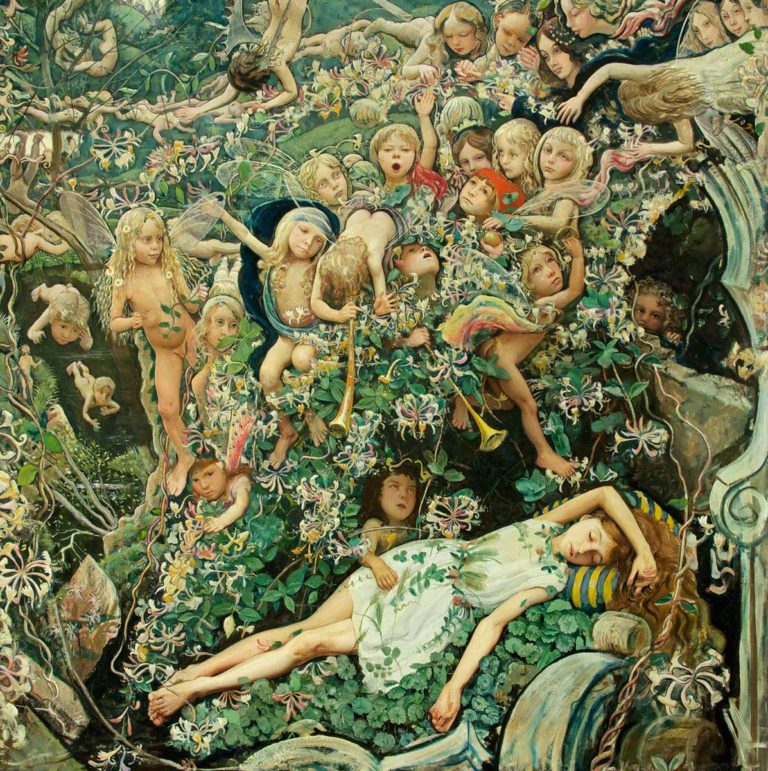Victorian Fairy Painting

description
Victorian Fairy Painting (Fairy painting)
Victorian magic painting is an art movement in British painting that arose in the second half of the 19th century under the influence of folklore.
The term was coined by British art historian Jeremy Maas.
Media: oil, canvas, wood, cardboard, panel.
Genres: literary, mythological, religious, symbolic. The basic painting techniques remain academic, but the plots are in a fantastic style. This art movement is characterized by clearly depicted figures; each can easily be taken out of the background frame, sometimes in a haze.
This art movement also manifested itself in graphics; for example, illustrations for the first edition of Lewis Carroll’s fairy tales, caricature (cartoons). Its influence on the design of clothes, ceramics, interior and sculpture is noticeable.
Similar movements: Pre-Raphaelites.
Key ideas:
The main characters of the paintings are fairies, gnomes, elves, graceful little people, children, all kinds of creatures from fairy tales.
Most of the works narrate kind and calm scenes, the characters are relaxed, frivolous, surprised, erotic, but some are ominous and tragic; there is an expectation of something terrible, some unpleasant moment. The figures do not seem to be attracted by the Earth’s gravity. The characters are characterized by unnatural poses, as if they are composed of air, moving synchronously with grass and leaves, moved by the light wind. In some pictures, we can see birds and other animals that observe what is happening with interest. Their eyes are filled with understanding and reason. Animals are directly involved in the action, relax, wear human clothes, smoke and sunbathe.
The main reasons for the formation of the movement:
– social needs: satiety with academic patterns and cultural norms, the search for new images and plots in painting;
– a close connection with the romanticism of British literature. The basis is tales and legends;
– innovations in the field of theater technology (stage smoke);
– drugs in the Victorian era; fashion for opium played a significant role (vivid dreams, hallucinations);
– partial influence of religion and occultism;
– in rare cases, mental disorders.
description
A British Symbolist painter, a master of monumental painting, illustrator and theater artist. He was a professor of decor and composition at the Scottish School of Art (Glasgow). Being close to contemporary theosophical and mystical groups, Cayley Robinson interpreted existential, philosophical questions in his own way, through mythological and biblical images. The artist was a member of the Royal Society of Watercolourists, the New English Art Club (New English Art Club), in other significant creative unions and organizations of Great Britain. The artist was a member of the Royal Society of Watercolourists, the New English Art Club and other significant creative unions and organizations of Great Britain.
1862 - 1927
